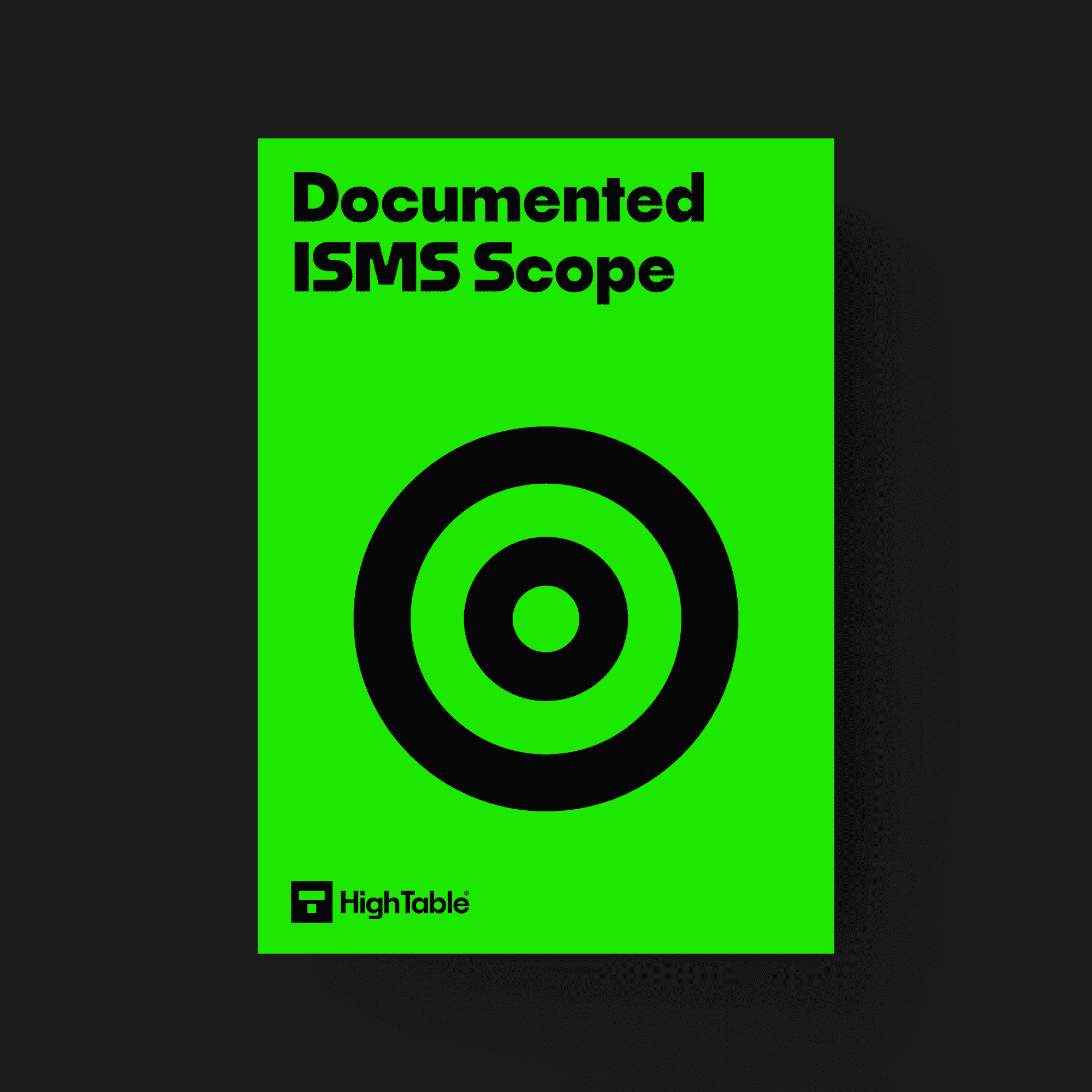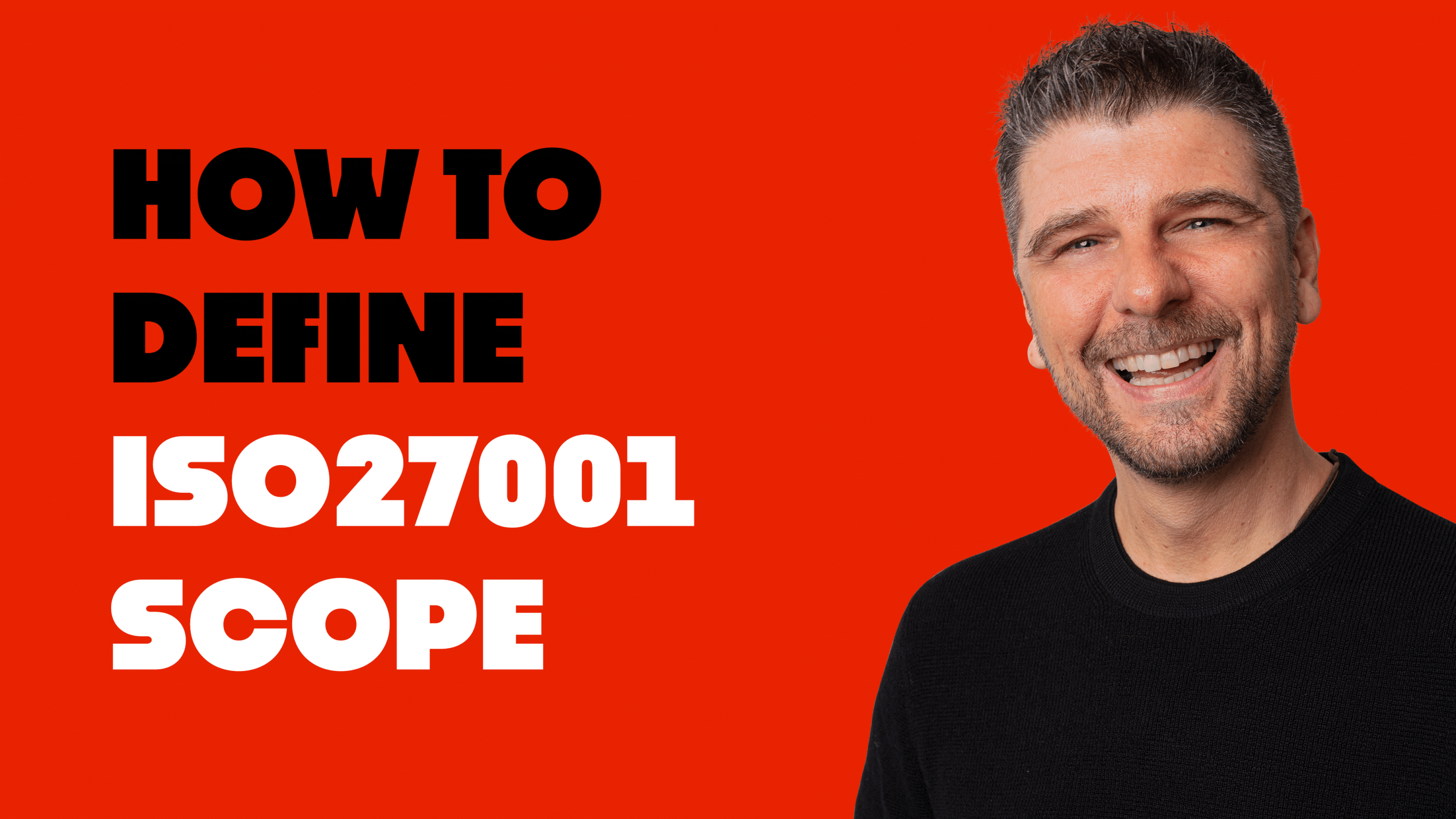Table of contents
- Introduction
- Which ISO 27001 Clause Applies to Scope?
- What is ISO 27001 Scope
- What is an ISO 27001 Scope Statement
- ISO 27001 Scope Examples
- ISO 27001 Scope Statement Examples
- ISO 27001 Scope Statement Template
- ISO 27001 Scope Statement Tutorial
- How to define ISO 27001 Scope: Step By Step
- What is the scope of ISO 27001?
Introduction
You want to lean how to define ISO 27001 Scope? You are unsure about how to go about it, where to start, what to include and how to write it?
In this article I am going to show you how to quickly and simply write, define and implement ISO 27001 Scope.
I am Stuart Barker the ISO 27001 Ninja and this is how to define ISO 27001 Scope.
Which ISO 27001 Clause Applies to Scope?
ISO 27001 scope is a requirement of ISO 27001 Clause 4.3 Determining The Scope Of The Information Security Management System. This video tutorial shows you what the requirement of the standard is and how to implement it to pass the audit.
What is ISO 27001 Scope
ISO 27001 scope is the scope of the ISO 27001 The Information Security Management System (ISMS).
We are going to build an information security management system with the information security policies and apply it to ‘something’ to get our ISO 27001 certification.
The ‘something’ that we are going to apply it to is the scope.
We document the scope in the ISO 27001 Scope Document Template.
What is an ISO 27001 Scope Statement
The ISO 27001 Scope statement is the statement that will appear on your ISO 27001 certificate. We explore this more in the ISO 27001 Scope Statement Beginner’s Guide.
The ISO 27001 certificate is the public document that you share with customers and potential customers.
They will use this information to assess if the ISO 27001 certificate covers what they are buying from you and therefore if they can place reliance on it for their needs.
The scope statement shows which parts of your business are certified and it shows them that you are doing the right thing for information security.
If the ISO 27001 scope statement does not cover the products or services that they are buying from you then they cannot place reliance on it and it will not be valid for them.
Consider an extreme example where your ISO 27001 scope statement covers the company stationary cupboard (I know, I know, it is an example) and the customer is buying an online SAAS Platform from you. Does the fact that you have ISO 27001 certification for your stationary cupboard give them assurances that the online SAAS Platform is secure and managed to the standard of ISO 27001?
If you are struggling with this one, let me help you, the answer is no.
ISO 27001 Scope Examples
When considering the what of ISO 27001 scope we can look at examples where we might want to apply the standard and gain ISO 27001 certification.
Common examples include
- A product
- A service
- A location
- A geography
- A team
- A department
ISO 27001 Scope Statement Examples
Here are a couple of example ISO 27001 scope statements to consider.
ISO 27001 Scope Statement Example 1: High Table Scope Statement
The following is taken directly from our very own ISO 27001 scope statement:
Information security consultancy and virtual chief information security officer services in accordance with the statement of applicability version 2
High Table ISO 27001 Scope Statement
ISO 27001 Scope Statement Example 2: General Scope Statement
The scope encompasses all employees, locations, technology, data assets and business processes that deliver [List the products and services in scope] in accordance with the statement of applicability version [version number].
General ISO 27001 Scope Statement
A great ISO 27001 scope example is provided in the ISO 27001 Scope Document template and can be readily reused and adapted for your needs.
ISO 27001 Scope Statement Template
Doing so many ISO 27001 certifications over the years led to the creation of the ISO 27001 Scope Document Template that people can use as part of their own ISO 27001 certification.

ISO 27001 Scope Statement Tutorial
In this short video tutorial I show you how to use the ISO 27001 Scope Statement.
How to define ISO 27001 Scope: Step By Step
When defining your scope be as clear as you can and include in your scope document the things that are in scope and the things that are out of scope. This is an extension to the scope statement and for your own management. Consider
- Systems
- People
- Locations
- Departments
Providing good documentation such as a Scope Document with associated architecture diagrams, technical documentation, network diagrams will enable you to define the boundaries of your ISO 27001 scope more clearly.
Time needed: 4 hours and 30 minutes
How to define ISO 27001 Scope
- List your products and services
Create list of all of your products and services. Use the names that your customers use and know them by.
- Choose the products and services that need ISO 27001 certification
From the list of all of your products and services choose the ones that customers are asking you about and / or the ones that you want to have and ISO 27001 certificate for.
- Identify the people, technology and premises that make up the chosen products and services.
List out the departments in the company, the technologies and the locations that make up the products and / or services that you want to have and ISO 27001 certification.
- Write a clear ISO 27001 scope statement
Write a clear statement that states the products and / or services and then clearly sets out the people, technology and locations that are in scope for the ISO 27001 certification.
What is the scope of ISO 27001?
The actual scope of ISO 27001 as a standard covers information security. It defines information security as the confidentiality, integrity and availability of data. The right people, with the right access, to the right data at the right time. As a standard ISO 27001 is actually a little tricker than that and bats above it’s pay grade in a number of areas.
Specifically it likes to include catch all statements like complying with all relevant laws. A great catch all and as such it opens up the audit to review all laws that are relevant and seek assurance you are meeting them. In practical terms, most certification auditors are only really comfortable with data protection laws such as those related to GDPR. They will go out of their way to make sure you fully meet the GDPR thus, in effective, expanding the scope of what is in reality a very simple standard.

